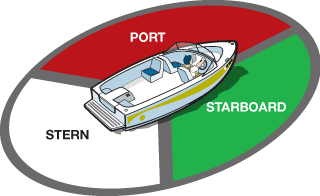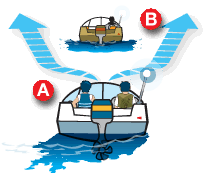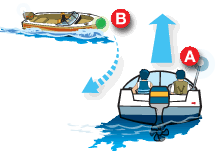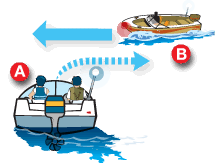Rules for Avoiding Collisions
Avoiding collisions involves precautionary measures (proper lookout, use of radar if present, etc.), but more importantly, collision avoidance is made possible when boat operators know how to deal with situations appropriately. Boats in constant motion will meet quickly, therefore it's necessary to take early and substantial action to avoid collisions.


Stern
A is the give-way vessel.
If any vessel approaches this sector, maintain, with caution, your course and speed.

Starboard
A is the stand-on vessel.
If any vessel approaches within this sector, keep out of its way.*
* This rule may not always apply if one or both vessels are sailboats.
Port
A is the give-way vessel.
If a power-driven vessel approaches within this sector, maintain, with caution, your course and speed.
As a general rule, rowboats, sailing vessels, and canoes are less maneuverable and therefore have the right-of-way over power-driven boats. However, if one vessel is unable to maneuver as it normally would, the most maneuverable vessel gives way.
8/33